










Monastery Chilandar
on Holy Mountain of Athos
in this, 1998 year the Chilandar Monastery celebrates its 800th Anniversary as
the Serbian Orthodox Monastery
| |

The original monastery church does not exist, which the King Milutin had
demolished
at the end of the 13th century in order to make a much larger edifice. But
there are
some signs that the original monastery church had carved ornamentation in the
Byzantine style of that time. The interior with the gold of its frescoes left the
strongest
impression, which was recorded by Theodosius in his work of Life of St. Sava. The
gold background for frescoes had a great influence on painting of the monastery
churches in Serbia during the 13th and 14th centuries.
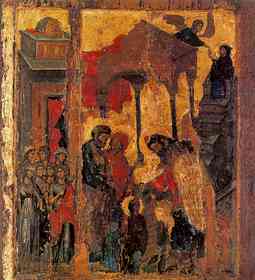
Icon of the Presentation of the Virgin, painted
in 1575, at the wish of Patriarch Anthony,
the feast icon of the Chilandar Monastery.
|
|
The old iconostasis, composed of stone slabs rather than
masonry, was small, like church.
In some prominent place in the church, an icon of the Virgin Hodeghetria would be
placed, as the Patron of Chilandar monastery, so that it can be properly venerated,
since Chilandar monastery bore the Virgin's name from the time of its restoration by
St. Simeon and St. Sava.
|
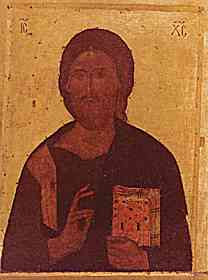 |
Christ Pantokrator from the
iconostasis of King Milutin's church, now in the monastery museums

|
|
Evangelist Mathew, icon from the
developed Deisis composition formerly on the iconostasis of the main church. It was
painted c.1360
|
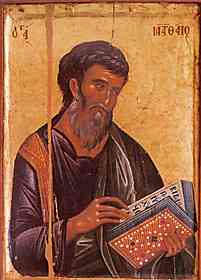 |
|
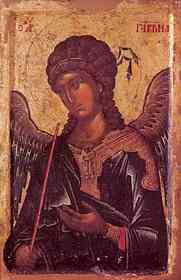 Archangel Gabriel, The deesis icon
c. 1360
|
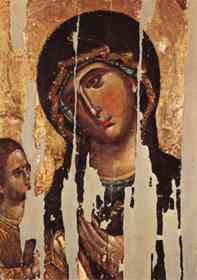 The Virgin Hodeghetria, a mid-13th
century icon
formerly one of the main icons on the iconostasis
of the old church. Probably Byzantine work.
|
|
Throughout the 13th century, fresco and icon
painting at Chilandar monastery was at the centre of the most progressive artistic trends
in the Byzantine world and Serbian state, which accounts for the fact that Chilandar's
works of art from that century are more numerous and even finer than those in other
monasteries on Athos.
|
The Virgin Eleoussa,
formerly one of the main icons on the iconostais of King Milutin's church. A work of the
same artist who painted the Christ Panokrator
|
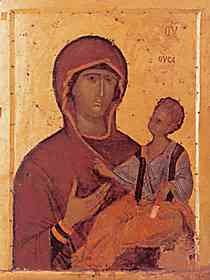 |
 |
|
After Milutin's reconstruction of Chilandar monastery,
there had been no need to undertake
any building. Over the next half century, the patronage of Serbian rulers mainly took the
form
of gifts of land.
From the imperial epoch, Chilandar has preserved some works which came into its
possession much later, but it is a part of its history as well.
|
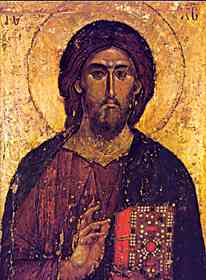
|
Christ the Saviour, icon from the mid-13th century, formerly on the old
church.
The work is by the same artist who painted the contemporry Virgin Hodegheria icon.
|
|
|
|
 |
Evangelist
Luke, icon from the developed Deisis composition formerly on the iconostasis of the main
church. It was painted c.1360
|
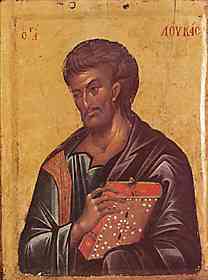 |
|
|
|
|
|
|

|
|
 
|
